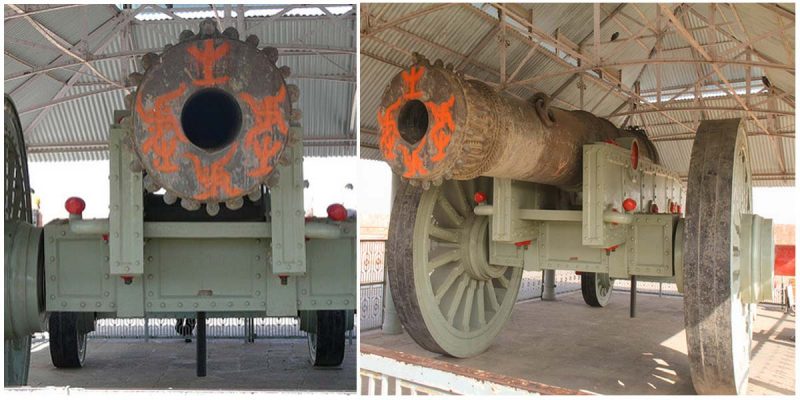The Jaivana cannon, located at the Jaigarh Fort in Jaipur, is the largest wheeled cannon ever constructed. It was cast in 1720 by Maharaja Sawai Jai Singh II of Jaipur, the administrator of the fort during the reign of the Mughal Emperor Muhammad Shah. The formidable strength of its builder lay in the vast array of artillery and copious supplies of munitions which he maintained.
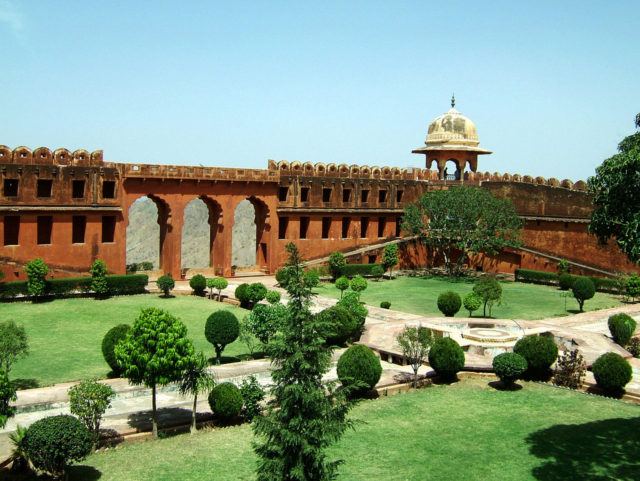
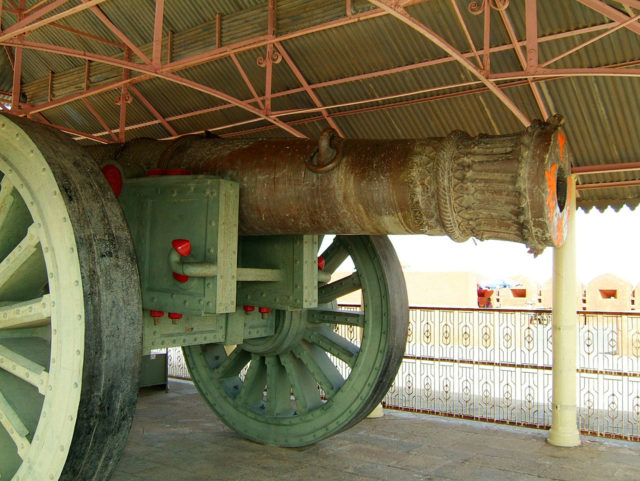
The 50-tonne cannon rests on six massive wheels, each nine feet in circumference. Four pairs of bulls rotated the gear system made from thick wooden crossbars fixed to a central beam. The tip of the barrel is 711 mm in diameter, while the rear of the barrel is 906 mm. The two thick rings on the barrel were used for lifting it with the help of a crane which, though incomplete, is still lying in Jaigarh. A 776 mm long elevating screw was used for raising and lowering the barrel.
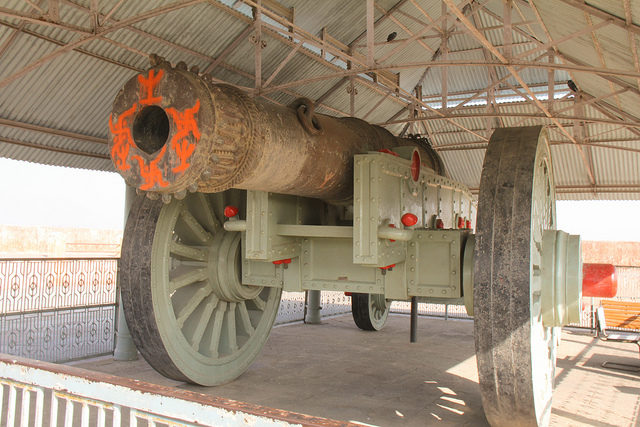
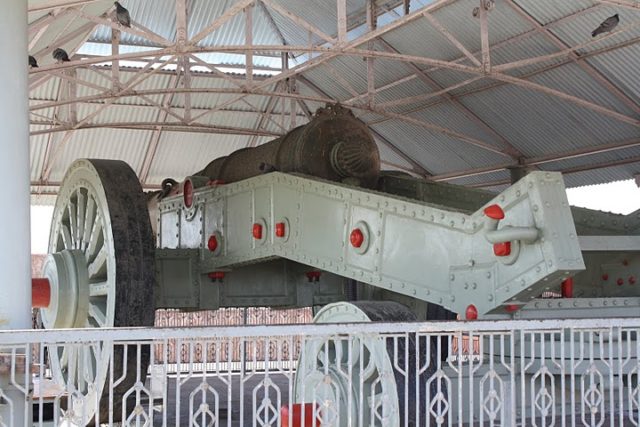
The design of the barrel is floral. An elephant rests on the tip of the barrel, and a pair of peacocks are carved in the center. The rear of the barrel is decorated with a pair of ducks.
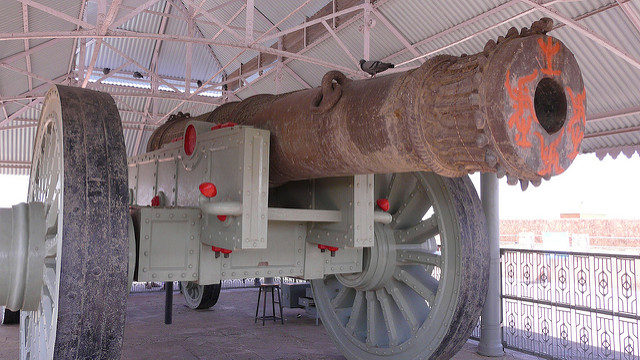
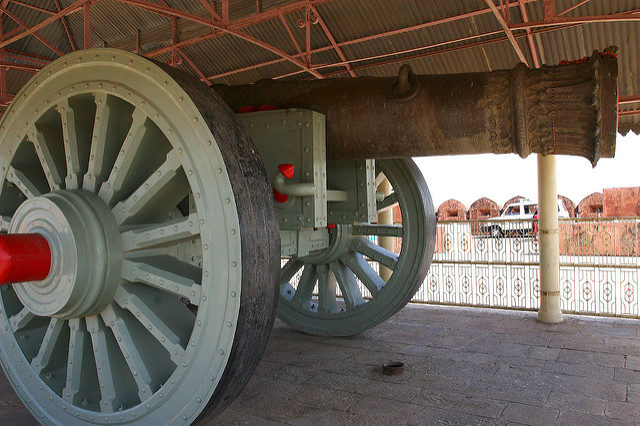
This giant weapon was never used in war. It is believed that the cannon was test-fired only once by Maharaja Jai Singh in 1720 with a charge of 100 kg gunpowder. The shot covered a distance of 35 kilometers which is now a pond by the villagers of Chaksu.
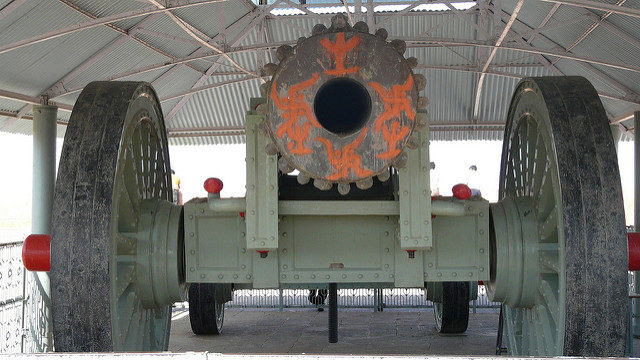
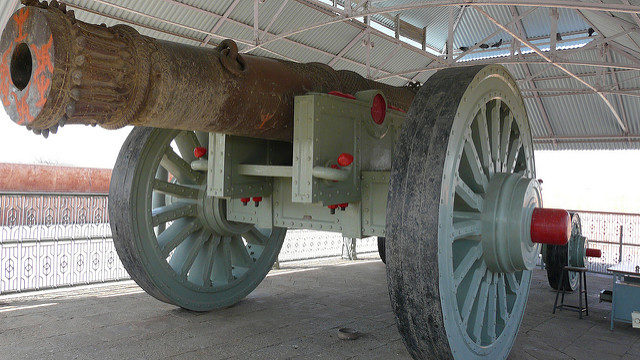
The cannon was kept near water for the gunners to dive in and escape the shock waves. But during the first firing, Maharaja Jai Singh, eight people and one elephant were reportedly killed by the shockwave and many houses collapsed in Jaipur.
